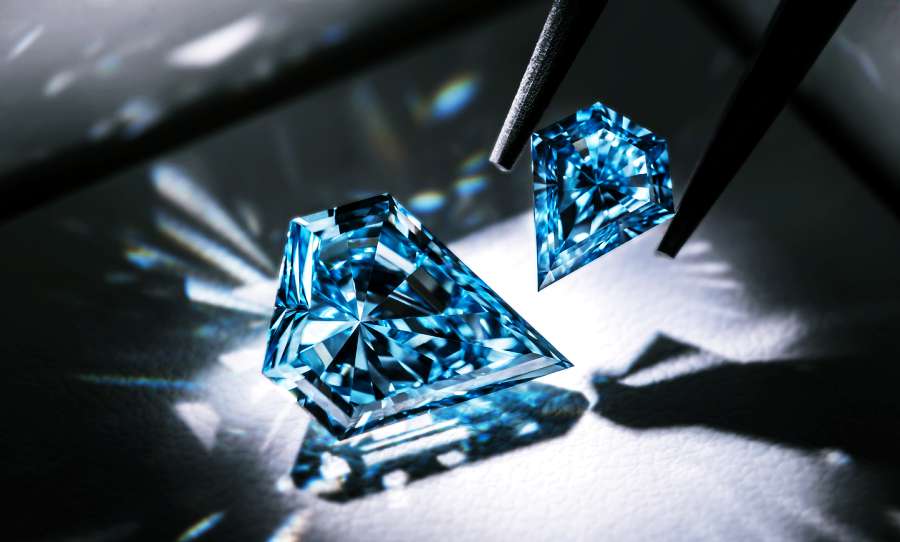Sat 27 April 2024:
Natural diamonds are known to originate in the Earth’s mantle under extreme pressure. However, diamonds can avoid the crush thanks to a new laboratory method.
Scientists can now produce cost-effective, lab-grown diamonds in just 150 minutes that look identical to a natural diamond.
A research team led by Rod Ruoff at the Institute of Basic Science (IBS) at the Ulsan National Institute of Science and Technology (UNIST) in South Korea has developed a novel technique for producing diamonds in the lab without extreme pressure.
Longer films and larger diamond crystals, which have many applications in contemporary electronics and optics, may be made easier by the technique, the researchers claim in Interesting Engineering.
Artificial or lab-grown diamonds are not a recent finding. Using molten iron sulphide, General Electric found this process almost 50 years ago. The Earth’s mantle, where diamonds are naturally created, is replicated using the High-Pressure, High-Temperature (HPHT) process.
The liquid metal transforms into diamonds when temperatures hit 2,552 degrees Fahrenheit (1400 degrees Celsius) and pressure reaches at least five gigapascals (1 Pa = 10,000 atm).
The alternative method, chemical vapour deposition (CVD), is less pressure-sensitive but necessitates specialised equipment for semiconductor production.
In all processes, a diamond seed is used to help start the diamond manufacturing process. The UNIST team’s solution, on the other hand, avoids this requirement by placing the diamonds at standard atmospheric pressure.
Many years ago, Ruoff recognized that diamond synthesis may not require higher pressures. A 2017 study found that when exposed to methane gas, liquid gallium dissolves carbon atoms and bonds them together to form a solid sheet-like graphene.
Ruoff believed that under the correct conditions, this method could also produce diamonds and began working to develop it.
For future applications, the biggest question now is how far the technique can be pushed. Ruoff’s team has already used it to make diamond films composed of thousands of tiny crystals packed cheek by jowl. Ciraldo notes that such films can already be made at low pressure by a mature technique called chemical vapor deposition, but it requires more expensive semiconductor fabrication equipment. The multitude of crystals can also degrade the performance of electronics made from the films. Ruoff’s hopes the technique can eventually produce thin films consisting of a single layer of pure diamond.
In the meantime, Ruoff predicts, many more labs will start to experiment with the new easy-bake recipe for diamonds. “A lot of labs around the world are going to start cooking things up,” he says.
In 2015, lab-grown diamonds made up less than one percent of the global sales but that amount jumped to roughly 20 percent by the end of last year.
This could be in response to the drop in price, with lab-grown diamonds costing a fraction of what people would shill out for a naturally grown one.
A two-carat round-cut diamond with a high color and clarity typically costs between $13,000 and $14,000, but lab-grown diamonds are a fraction of that price, costing $1,000.
‘Prices of lab-grown diamonds are falling. The reason is because of simple supply and demand. So many manufacturers are coming out and flooding the market with them, which is causing prices to dive,’ Mehul Sompura, CEO of Diamond Hedge, a diamond price comparison tool, told CBS MoneyWatch.
SOURCE: INDEPENDENT PRESS AND NEWS AGENCIES
______________________________________________________________
FOLLOW INDEPENDENT PRESS:
WhatsApp CHANNEL
https://whatsapp.com/channel/0029VaAtNxX8fewmiFmN7N22
![]()
TWITTER (CLICK HERE)
https://twitter.com/IpIndependent
FACEBOOK (CLICK HERE)
https://web.facebook.com/ipindependent
YOUTUBE (CLICK HERE)
https://www.youtube.com/@ipindependent
Think your friends would be interested? Share this story!





